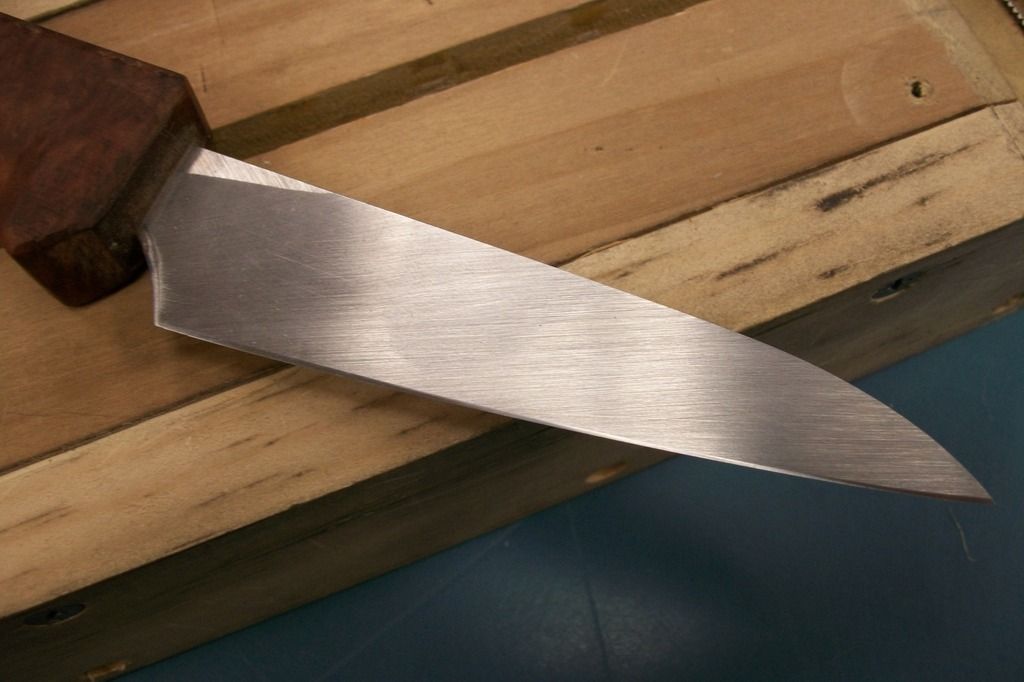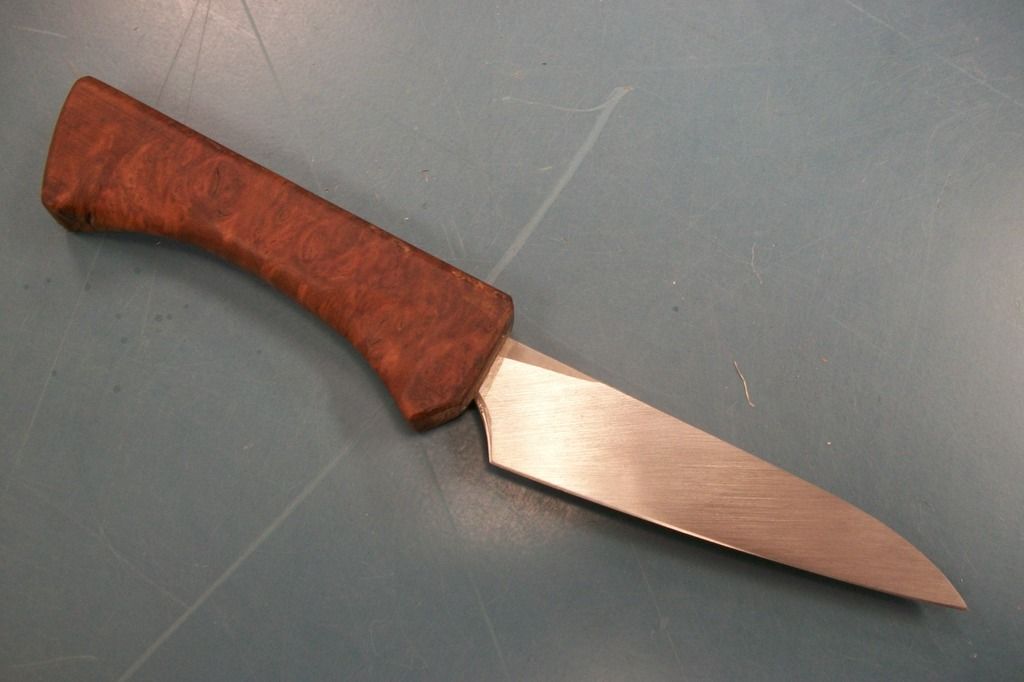- Joined
- Jun 4, 2010
- Messages
- 6,642
Had a chance to run a SuperQuench n690 on the Edge Inquisitor for some initial numbers. Edge was finished on 4k Norton waterstone, test rope is 3/8 Manila.
Edge was breezing through newsprint and shaving to the clean.
10lbs of static load with 2" of travel it managed 92 passes before skipping three in a row, this puts it more or less in line with BarkRiver n12 on this device.
Initial push cut was an impressive 12.5 lbs, even after reaching failure for the draw cut test it still made a pressure cut with 16 lbs. I intend to resharpen and retest but might be a few days and will include a few pics. Grind work on the blade is top notch in terms of geometry and aesthetics.
Martin
Edge was breezing through newsprint and shaving to the clean.
10lbs of static load with 2" of travel it managed 92 passes before skipping three in a row, this puts it more or less in line with BarkRiver n12 on this device.
Initial push cut was an impressive 12.5 lbs, even after reaching failure for the draw cut test it still made a pressure cut with 16 lbs. I intend to resharpen and retest but might be a few days and will include a few pics. Grind work on the blade is top notch in terms of geometry and aesthetics.
Martin


